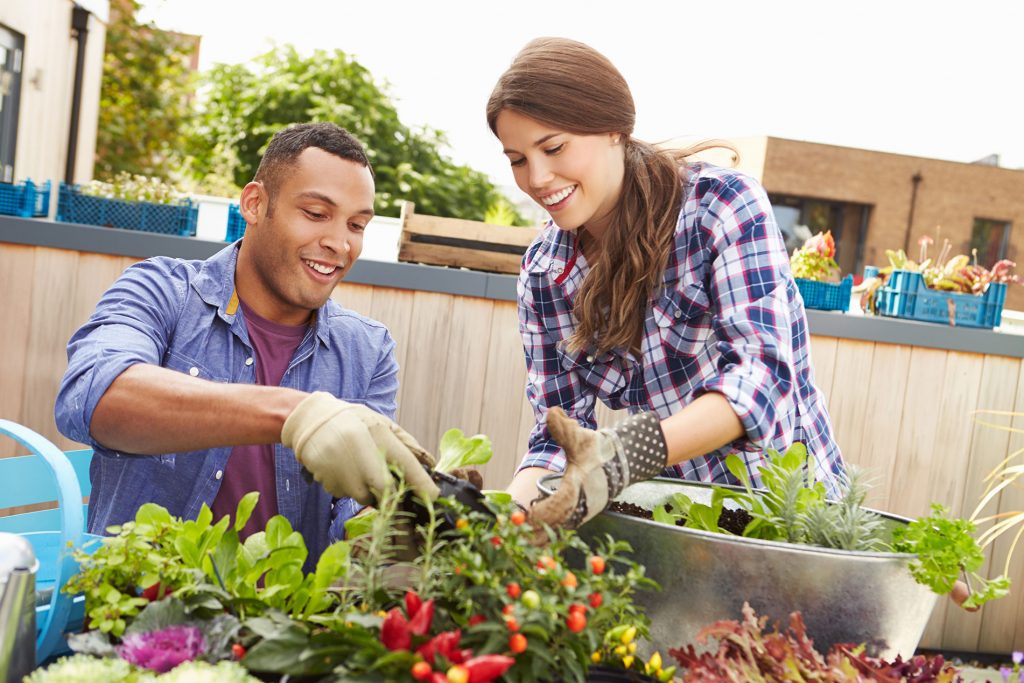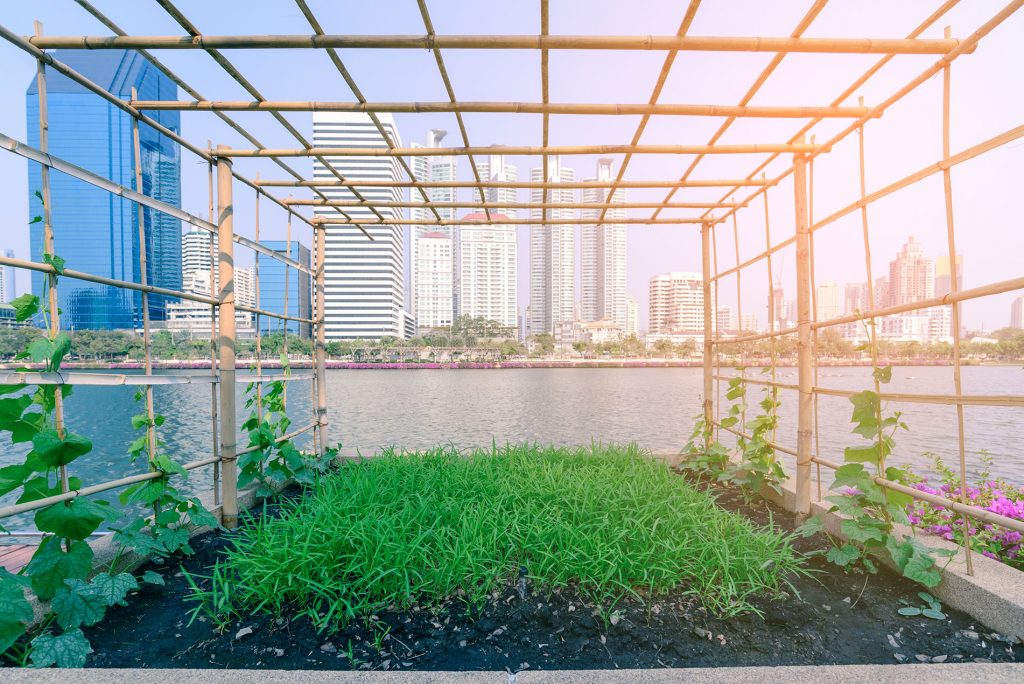How do tomatoes from urban gardens taste?
Urbanites get their hands dirty
Making a patch, casting seeds, watering from time to time, waiting, being happy about the sprout, waiting, waiting, waiting, being even happier about the first tomato, picking it carefully, eating it with pride and respect, enjoying the flavour only home-grown vegetables have, waiting for the next tomato to grow. That is the charm of home gardening. But why do townspeople like to grow their own vegetables, fruits and herbs? Why is it great to get your hands dirty?
Why urban gardening?
Urban gardening, urban agriculture, urban farming, etc. There are many words for a trend spreading around cities. What they have in common is the use of urban space for growing vegetables and fruits. According to the sociologist Christa Müller there are different reasons for the engagement of citizens in urban gardens. On the one hand the mistrust in the anonymous, globalized economy is growing, as she explains in an interview with the press agency dpa (see orf.at). Being aware of the gap between production and consumption and the fear of economic instability makes citizens want to gain some autonomy by growing their own food.

Therefore, the creation of urban gardens can even be a social or political statement in order to make people aware that urban space is not only about traffic and consumption but also about the citizens’ needs for sustainability and liveability. On the other hand, Müller explains that especially townsfolk, who are always surrounded by urban environment, like the sensual experience with nature. Gardening and digging soil is a possibility to have physical contact with nature and it enables a nearly spiritual experience of coming closer to oneself.
The urban garden is a small part of nature in the middle of the city environment, where urbanites can influence and observe natural processes. It becomes a realm of experience where social exchange happens and where a sense of community and cohesion are strengthened. Consequently, urban gardens help make cities more liveable – in a social as well as in an aesthetic aspect.
Urban gardening – a new trend?
Urban Gardening is not a contemporary phenomenon. Urban gardens have existed since there are urban spaces. Especially during the industrialization, when cities were growing, the creation of urban gardens became more important. Since the transport possibilities were poor and cooling systems did not exist, it was impossible to supply the cities’ needs of fresh products from the near surroundings. Therefore, urban gardening and agriculture was of vital significance for the townsfolk those days.

Urban gardens provided the citizens with the vegetables and fruits they needed. Although, initially urban gardens were essential for townspeople, their motives have changed. Today urban gardening has rather become evidence of an attitude and a statement of naturalness and sustainability and against the dependence on the global food economy.
Smart effects of urban gardening
On rooftops, on balconies, along house walls, as small private gardens or created by communities, fenced off or not – urban gardens can take various forms depending on external conditions and the individual possibilities of the gardener. What units the different urban garden concepts is their multiple positive aspects:
- Fellow land can be used reasonably. Growing herbs, vegetables or fruits is a good possibility to utilize unused space in urban areas.
- The local cultivation of grocery helps reduce the length of transportation routes and consequently CO2-emission. Therefore, urban gardening is an active contribution towards a more sustainable future.
- The cultivation of own groceries makes people aware of natural processes. Getting to know what it means to grow tomatoes, cucumbers, strawberries or other vegetables, people will eventually handle groceries more respectfully.
- The integration of urban processes in natural life-circles contributes to the sustainable recycling of waste. Organic waste, for instance, can be composted and used as nutritious humus for urban garden patches. In doing so, life-like circles can be created even in cities.
- Gardeners know what they eat. Growing their own vegetables and fruits enables them to control the processes and consequently liberates them from the dependence on big concerns. Every gardener can testify it: nothing tastes better than a sun-ripened tomato that grew on real soil.
- Everyone can become an urban gardener. If there is no community garden, arable space or a roof deck that can serve as a cultivation area, even a balcony with some pots or a window box is enough to grow a small choice of herbs, fruits or vegetables.
Digging in the soil? – it is worth it!
By creating a small part of nature between streets and buildings urban gardens enrich cities as well as their residents. By planting and growing their own vegetables and fruits, urbanites get in contact with nature and in doing so they even contribute to a more sustainable treatment with resources. And after all, urban gardeners can testify: nothing tastes better than home-grown tomatoes.

